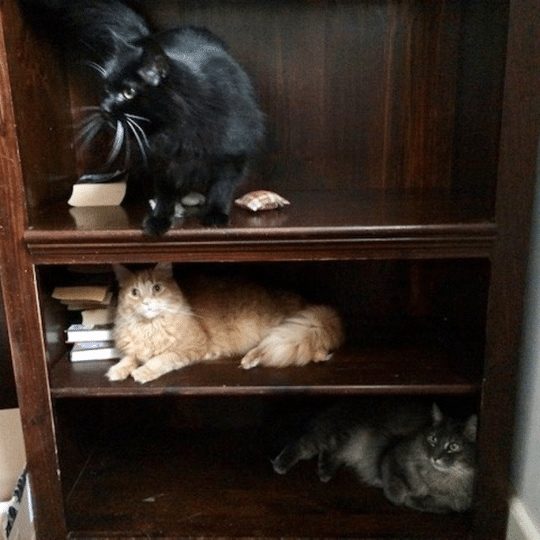Science is always changing as ideas grow and evolve—it’s one of my favorite things about the topic. During my undergraduate years at Canisius College, I joined a research team to experience this first-hand. We were focused on studying the welfare of shelter cats to find ways to lessen their stress, so they were more likely to be adopted. The project I worked on focused on space requirements in colonially-housed cats and the conclusions are very relevant to current world events. I am lucky enough to have worked with an amazing advisor who has become a very good friend—Dr. Malini Suchak, Associate Professor of Animal Behavior, Ecology, and Conservation at Canisius College and Feline welfare and cognition researcher. I reached out for her personal experience and description of some of the findings of the project:
Although I’ve studied cats for eight years, and animal behavior much longer, the pandemic has offered me a unique, 24 hours per day look into my cat’s life. I’ve found myself fascinated by how he socializes with me on his own terms—at times endlessly “Zoom-bombing” my meetings, demanding attention, and other times disappearing for hours at a time into some secret napping spot I still haven’t found. This independence of spirit at least partially stems from the fact that cats were domesticated from a solitary species, the near Eastern wildcat. In fact, in true independent cat fashion, we didn’t domesticate them; they did it themselves in a process called self-domestication that took place about 9,000 years ago.
Fast forward to 2020, and we have a (sometimes) cuddly companion, living a posh life in the house, sometimes with other cat companions. Cats are interesting because their ability to tolerate (or maybe even like) being around other cats is dependent on them being exposed to other cats early in life. They tend to vary a lot in this regard; while some cats have close friends, most fall somewhere between accepting other cats and barely tolerating their presence.
When they do live together, whether at home or in animal shelters, cats are experts at keeping distance between themselves and others, which might help them cope with too much social contact. They might “time share” favorite resources like a box or a windowsill, where everyone gets a turn at different times of day. They use items in their environment, like shelves, crates and boxes to create “personal space bubbles” and physically separate themselves from others. All these actions help increase their distance, or their sense of distance from other individuals.

In fact, we found that cats living in groups at a shelter kept an average of 6ft (2m) from each other. If that sounds familiar, it’s because that’s the recommended distance we humans should maintain to social distance and reduce the spread of coronavirus. We also found that cats living in groups were no more likely to develop an upper respiratory infection than those housed alone, despite the fact that you would predict exactly the opposite—increased disease-risk is one of the major costs of living in groups. Now, there could be a lot of reasons why the disease rate was the same, but we can’t discount the fact the cats naturally keep the recommended distance between themselves.
Being part of this team changed my life in many ways; I realized collecting and processing data (which is most of research) wasn’t what impassioned me. I found I loved teaching others what the research was discovering instead.
So, here’s hoping you enjoy the rest of Meowfest a comfortable distance from your feline friend!
Abbey Hines is a Gallery Experience Presenter as well as an Outreach Educator and Animal Handler in CMNH’s Life Long Learning Department.
Dr. Malini Suchak teaches courses in introductory animal behavior, animal cognition, and animal welfare at Canisius College, as well as researches how nonhuman animals think about other individuals in their social groups.
Related Content
Cat Chat 101: The Basics of Domestic and Wild Vocalizations
